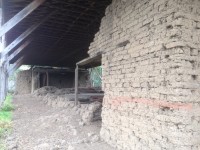Lately there has been a stir over at Maxwell Farms Regional Park. There are discussions in the works about upgrading the park to include dedicated biking trails, expanding tennis courts, a dedicated dog park and creating additional recreational facilities for the public to enjoy.
Within the 85-acre Maxwell Farms Regional Park, families flock to the Valley of the Moon Boys and Girls Club, MacDougald Skateboard Park, and the multi-use fields used for soccer, softball, tennis and Little League baseball. With all the recent conversations regarding the park’s future, this column shall discuss it’s past, rehashing a few older columns focused on El Verano history.
George H. Maxwell, the park’s namesake, was yet another interesting individual in Sonoma’s history. However, to understand his significance locally and in U.S. history, I must first discuss the unquestionably intriguing Reclamation Act of 1902.
The idea of moving water from one location to another took hold as western expansion brought settlers from east coast locales to areas such as the Arizona desert. Here, observing the archaeological remains of the ancient Indian ruins, early American settlers noticed an intricate irrigation system bringing water from the mountains to the desert, allowing for the cultivation of crops.
Prior to the Reclamation Act, Francis Newland arrived in Nevada in 1888 and began to promote an irrigation system that would divert water from the Truckee and Carson rivers to local farmers. Newland was hoping that the project would be funded through the sale of federal lands. At this time, demand for water began to exceed the supply derived from intermittent rainfall.
Congress enacted the National Reclamation Act, also known as the Newland Act, in 1902. In essence, a portion of the monies received from the sale and disposal of public lands were to be applied to the construction of irrigation works for the reclamation of arid lands. A key figure and promoter of the Reclamation Act, was George H. Maxwell. Maxwell was a water lawyer and became an advocate for federal irrigation projects throughout the U.S.
It was President Theodore Roosevelt that put together a team of legislative alliances and advisors that made the passage of the act possible. One of Roosevelt’s primary legal advisors was none other than Maxwell, but what about his local affiliations and questionable contributions to the local economy.
Maxwell was a landowner here in Sonoma and had a beautiful home near Sonoma Creek. Maxwell began to develop land on the west side of Sonoma Creek, naming his proposed development El Verano, which translates to “the summer” in Spanish. A new depot for the Santa Rosa & Carquinez Railroad was constructed in 1888 and Maxwell began to sell land for $80 per lot.
Unfortunately for Maxwell and those who plopped down their life savings for their dream homes, Maxwell was unable to guarantee property titles. El Verano flourished for a couple of years, but began to self-destruct with lurid accusations of foul play. Did Maxwell actually own the land that he was selling? In 1877, rancher J. Clark owned most of the land in which El Verano now lies.
Within a few years, however, the entire area began to once again prosper with the development of summer resorts in El Verano, Agua Caliente and Boyes Hot Springs. The train was once again full of passengers heading to hotels such as Parente’s, El Verano Villa and Paul’s Resort. Given Maxwell’s propensity for irrigation and water, one can still visit what is left of his estate and witness first hand, his passion for water. Just west of the ball fields at Maxwell Farms Regional Park, take a stroll through the trees, meadows and orchards, and one will find a myriad of irrigation canals constructed by Maxwell.
Upgrading the park will be great for locals. There will be a variety of opportunities to make suggestions for the future of the park. There is also a proposed project to construct an aquatic center across the street. If you haven’t visited the park recently, put on a coat and go take a hike, you’ll be glad you did.


Be First to Comment